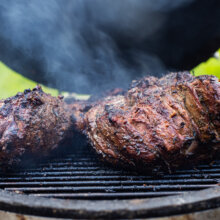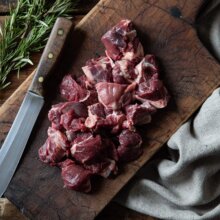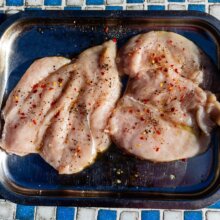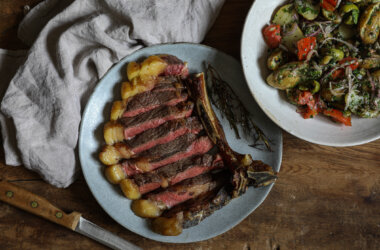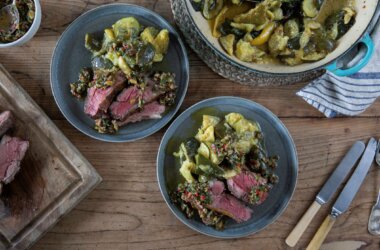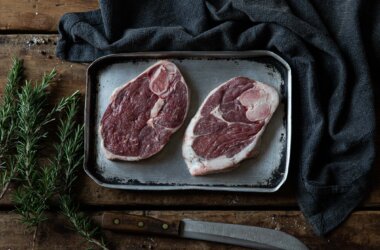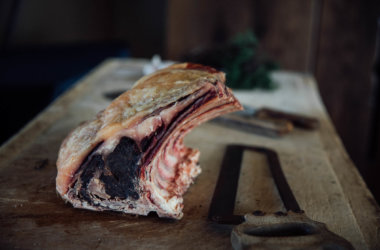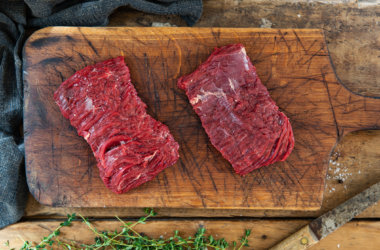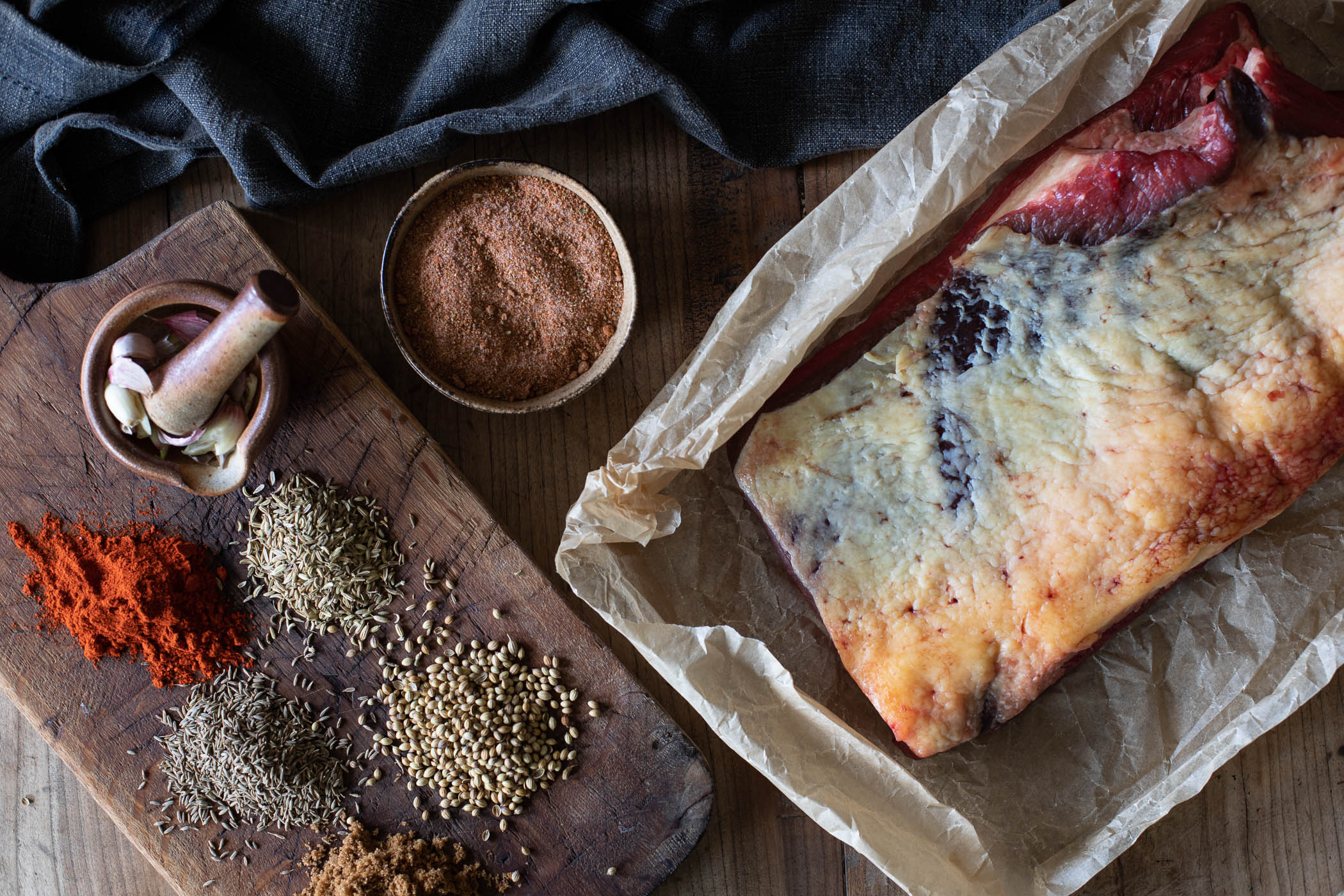
How Long to Smoke a Brisket
How to Smoke a Brisket: Nothing compares to fork-tender, deliciously smoky brisket cooked low and slow over wood or charcoal. To achieve this, you’ll need a kamado BBQ, pellet grill, or offset smoker — something that can maintain a low, consistent temperature over a long period.
Smoking brisket contains a lot of connective tissue, which means it needs time for everything to break down properly. For a 2.5 kg brisket, you can expect a cook time of around 7–8 hours (not including resting).
However, as with all low ’n’ slow BBQ cooking, always cook to internal temperature, not time. For the best results, aim for an internal temperature of 92–94°C. This is the sweet spot for fall-apart, melt-in-the-mouth beef — and a good meat thermometer is absolutely essential.
Best Way to Smoke a Brisket
- Preheat the Smoker: Set your smoker to around 110°C and allow it to stabilise. Maintaining a consistent low temperature is key throughout the cook.
- Prepare the Rub: A dry rub — a mix of dried herbs, spices, salt, and sugar — adds flavour and helps develop the bark. You can apply it just before cooking, but for deeper flavour penetration, season the brisket the day before and refrigerate overnight.
- Season Generously: Apply your chosen rub (or keep it classic with just coarse sea salt and cracked black pepper) liberally across all sides of the brisket, making sure it’s evenly coated.
- Position the Brisket: Place the brisket fat-side up on the smoker grill. Close the lid and allow the brisket to cook undisturbed. This allows the fat to baste the meat as it renders.
- Wrapping the Brisket: A bark (dark crust) will begin to form during the cook. Once the bark has set — typically after several hours — wrap the brisket in several layers of greaseproof or butcher’s paper. This prevents the bark from becoming overly hard or bitter while still allowing smoke to penetrate.
- Cook to Temperature, Not Time: Continue cooking until the internal temperature reaches 92–94°C. A good sign of doneness is when a sharp knife slides into the meat with no resistance.
- Resting is Essential: Rest the brisket in its wrapping for at least 30 minutes, ideally up to an hour. This allows the juices to redistribute and the meat to relax. You can also cool and refrigerate the wrapped brisket if cooking ahead of time — it reheats beautifully.
Pro Tip: Look out for the pink “smoke ring” beneath the surface — a true badge of honour for any pitmaster and a sign of a well-smoked brisket.
Top Tips for Smoking Brisket
- Every smoker runs differently: No two smokers are identical — airflow, fuel type, insulation, and even the weather play a role. Get to know your setup and monitor the temperature throughout. Brisket likes it steady: aim for around 110°C and resist the urge to lift the lid too often.
- Choose the right wood: Hardwoods like oak, hickory, or pecan pair beautifully with brisket, lending rich, smoky depth. Fruit woods like apple or cherry offer a lighter touch. To maintain a consistent smoke over several hours, use wood chunks, not chips or pellets — they burn slower and more evenly.
- Trim to suit the cook: Some pitmasters trim the fat cap down to around ¼ inch to encourage smoke penetration and even rendering. Others leave more on and trim after cooking. Either way, a good layer of fat helps keep the meat moist throughout a long, slow cook.
- Use a meat thermometer: Brisket isn’t cooked to time — it’s cooked to temperature. Aim for an internal reading of 92–94°C in the thickest part of the meat. At this stage, connective tissue has broken down and the brisket should yield easily to a knife or probe.
- Look out for the smoke ring: A pink layer just beneath the bark — typically up to 3mm deep — is called the smoke ring. It’s the result of a chemical reaction between the meat’s myoglobin and gases from wood or charcoal. A sure sign things went right.
- Wrap when the bark is right: Once a solid bark has formed (dry, dark, slightly crusty), wrap your brisket in butcher’s paper or greaseproof paper. This prevents the crust from turning too hard and helps push through the stall — the stage where internal temp stubbornly refuses to rise.
- Rest it properly: Resting is crucial. Leave the brisket wrapped and rest for at least 30 minutes, ideally up to an hour. This allows the juices to redistribute and the texture to relax. Cooking ahead? Let it cool in the wrap, refrigerate, and reheat gently when needed.
